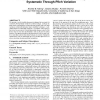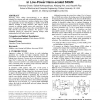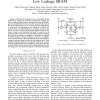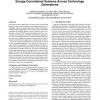201 search results - page 9 / 41 » Evaluating Run-Time Techniques for Leakage Power Reduction |
ISLPED
2007
ACM
13 years 9 months ago
2007
ACM
We present a novel detailed placement technique that accounts for systematic through-pitch variations to reduce leakage. Leakage depends nearly exponentially on linewidth (gate le...
DAC
2006
ACM
14 years 8 months ago
2006
ACM
Increasing source voltage (Source-Biasing) is an efficient technique for reducing gate and sub-threshold leakage of SRAM arrays. However, due to process variation, a higher source...
ISCAS
2007
IEEE
14 years 1 months ago
2007
IEEE
— Reducing the leakage power in embedded SRAM memories is critical for low-power applications. Raising the source voltage of SRAM cells in standby mode reduces the leakage curren...
CASES
2006
ACM
14 years 1 months ago
2006
ACM
Rising interest in the applications of wireless sensor networks has spurred research in the development of computing systems for lowthroughput, energy-constrained applications. Un...
CAL
2002
13 years 7 months ago
2002
Abstract-This paper proposes the use of four-transistor (4T) cache and branch predictor array cell designs to address increasing worries regarding leakage power dissipation. While ...




